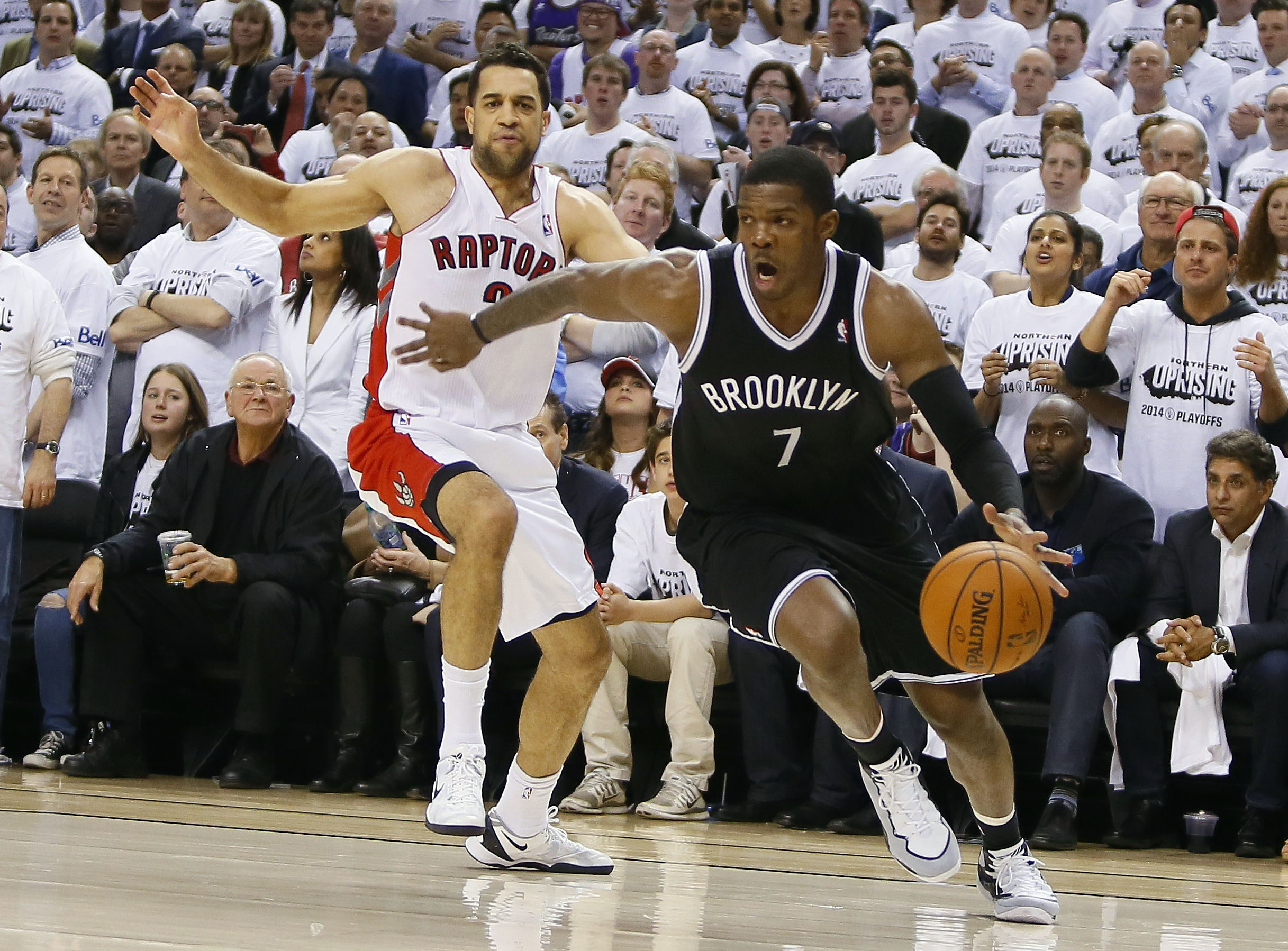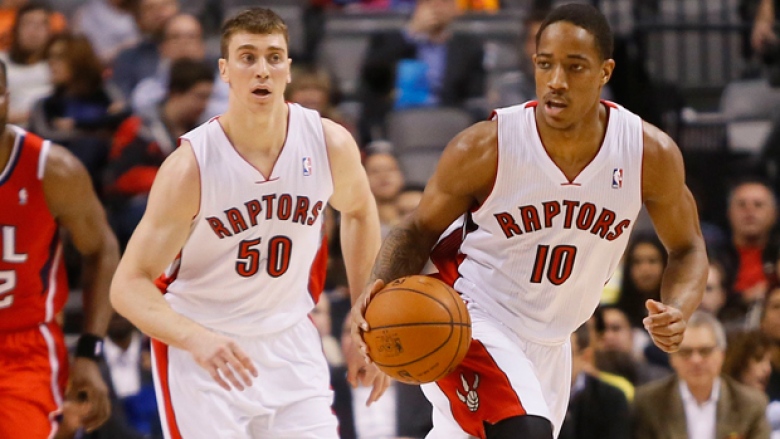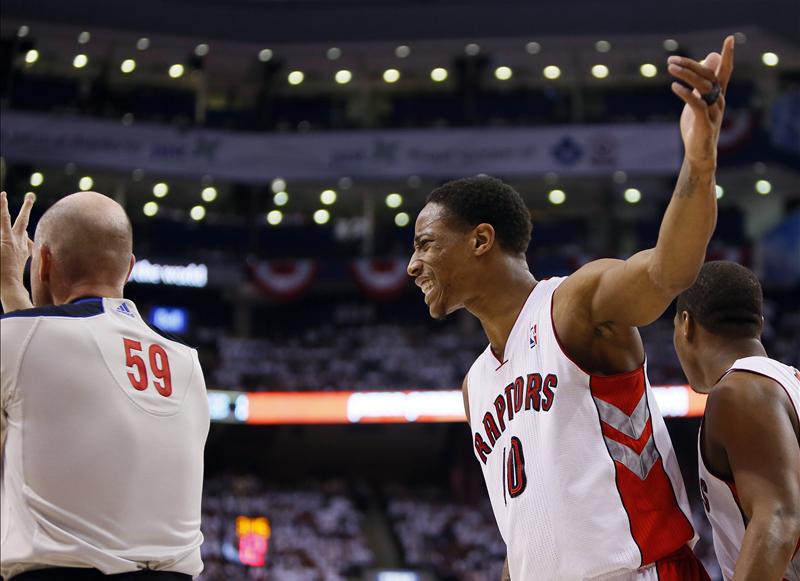All jokes aside, he’s killing the Raptors.
Perhaps we here at Raptors Republic underrated 7-time All-Star Joe Johnson.
A week before the playoffs started, Zarar and Andrew were asked on an episode of Raptors Weekly, “which Net commands a double-team,” to which Andrew reluctantly answered, “I guess…Joe Johnson? If he’s posting up, it’s more so an issue of size, rather than length, but I’m not that big of a fan of offenses that revolve around posting-up guards. I think this is a team you can play 1-on-1.” Zarar shared similar sentiments.
So, naturally, Johnson has been the one player the Raptors have not been able to stop. Through two games, Johnson is averaging 21 points, 5.5 rebounds, 3 assists per game on 57.6% shooting. He’s been the Nets’ best offensive player by far. The question is — how did we not identify this mis-match?
On one hand, we probably underrated him because of his relatively pedestrian numerical output in the regular season. In 79 games played, Johnson averaged 15.8 points, 3.4 rebounds and 2.7 assists in 32.6 minutes played per game, on an efficient 56.4 TS%. Those numbers are good, but they didn’t exactly scream “DANGER: DURANT AHEAD”.
On the other hand, COUNT THE (All-Star) RINGZZZ.
All jokes aside, Johnson has been fantastic, especially in the post, where his size is the crux of his effectiveness. Weighing in at 6’7, 240 lbs, Johnson has 25 pounds on DeRozan, and over 40 pounds on Ross. When he attacks in the post, no one on the Raptors — save for Fields in brief stretches — has been able to stop him 1-on-1. In Game 1, Johnson overwhelmed Ross and kept him in foul trouble. In Ross’ stead, Casey tried DeMar DeRozan (too small), and John Salmons (t00 terrible to stomach), but to no avail. In fact, Johnson’s post-game was such a problem, that it forced Casey to dust off Landry Fields, who had been rotting away on the bench for months. Fields fared well against Johnson in Game 2 and largely held him in check, as denoted by Blake.
Johnson’s size advantage in the post is two-fold. First, he’s able to catch the ball wherever he wants. By setting up shop in the mid-post, Johnson has the option of backing down his man, turning around for the shot, or firing a pass to the open man. In part, what made Fields’ so successful in Game 2 was the ability to force Johnson to catch the ball outside his favorite spots. The second advantage to his size is obvious. As seen below, Johnson is able to overpower DeRozan, and rise up for an easy shot.
The size mis-match has forced the Raptors into doubling him. That’s also an issue because the Nets have a roster chalked full of shooters. Granted, the Nets are only shooting 11-for-48 (~23%) from deep thus far, but that’s more a product of luck, than scheme as the Nets shoot 37% from deep on the year.
Johnson sets up in the mid-post because it afford him the opportunity to pass. His floor position, combined with his height, affords him a virtual 180 degree plane of passing lanes, which means he can find the open man on the perimeter with a singular pass. This makes closing out much harder because there’s very little time for the Raptors to recover. On the following play, DeRozan floats over for a half-hearted contest. His passivity causes Lowry to hedge towards Livingston (DeRozan’s assignment) which leaves him too late for a closeout on Williams.
Moreover, Johnson has also been successful operating in the pick-and-roll. Over the regular season, Johnson ranked 22nd in points per pick-and-roll as the ball-handler, owing once again to his tremendous size advantage over most 2-guards. However, defending the pick-and-roll — especially the ball-handler — is one of Toronto’s strengths, as they ranked 7th in points allowed per pick-and-roll.
The problem once again boils down to size. Toronto’s pick-and-roll defense numbers look nice, but that’s mostly a testament to Lowry and Johnson’s cohesion in defensive sets. For the most part, Johnson has attacked Toronto where they’re weakest — at the wing, and center.
When he curls, Johnson likes to stay really tight against the screen, and pause momentarily. This subtle move effectively seals the ball-handler defender behind him, and creates a situation where the big has to step up and guard two players at once. Going under the screen is not an option on this play because of Johnson’s shooting ability. If the big doesn’t step up to guard Johnson, he simply rises up for an easy shot.
Conversely, if the big does step up, Johnson has the option of a short pass over to his screener under the basket. The Raptors aren’t able to routinely send help defenders towards this play because the Nets purposefully line up shooters on the weak-side (notice Williams’ position before Johnson’s drive). This keeps the Raptors’ help defender — in this case DeMar DeRozan — at bay along the perimeter.
Unfortunately, there isn’t a simple solution to this problem.
Playing Fields for an extended period of time isn’t feasible because he essentially clogs the paint. Yes, I hear the commentors chiming in with “but actually, he’s a fantastic cutter”, but let’s get real — he’s not Mariano Rivera. Cuts or no cuts, he kills spacing. In the modern NBA, offenses can’t breathe with two non-floor spacing players on the court at once, unless one of them happens to be a dominant force in the paint. This means Fields can co-exist with either Jonas (post-threat) or Patrick Patterson (floor-spacer) but it leaves Amir Johnson out of the equation, which means the Raptors would simply be trading horses at the corral. Fields is a defensive upgrade on Johnson, but no Amir means Patterson is switched onto Pierce. The Raptors are forced into making a tough choice — they’re giving something up either way.
In all likelihood, the Raptors’ coaching staff sees the quid pro quo, and have made their choice. Johnson can get his within reason, but they’re not conceding open looks for everyone else.
Ultimately, given the Nets’ other weapons on offense, their choice is a wise one. While it’s painful to watch Johnson carve up the defense time and time again, the trade-off is worth the gamble if players like Pierce and Williams become stationary jumpshooters. Quite frankly, for all their wisdom and guile, the Nets operate in a similar way to the Raptors — they’re a perimeter-oriented squad that succeeds by finding the open man amidst the chaos. If they’re going to attack through Joe Johnson every time down the floor, the predictability helps limit chaos, and pins Raptors defenders to where they should be.




